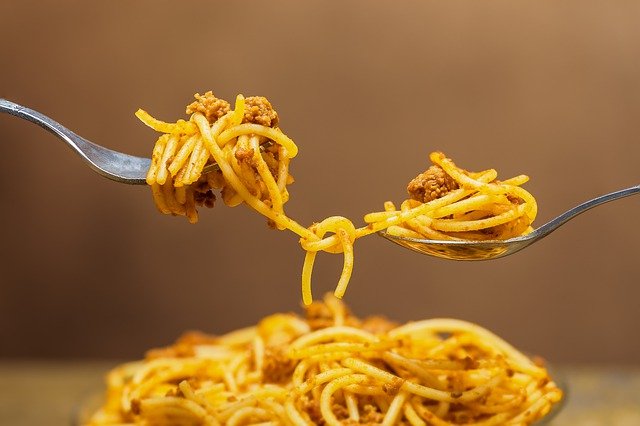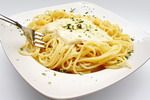
Everyone I know loves noodles. For me noodles encompass everything from spaghetti to ramen and egg noodles to vermicelli. They are all great eaten cold and alone or with a nice homemade sauce or floating in a lovely soup. The problem is the easiest thing to make noodles out of is wheat. The gluten in wheat is both stretchy and binding, which is perfect for rolling it out and stretching it out to form the long noodle shape by hand. If you have never watched noodles being made by hand, it is amazing. Here is a youtube link.Modern equipment extrudes the noodles by squeezing the dough out through little noodle-sized holes. This makes the process much easier and opens up the possibility of producing noodles out of materials that are not as stretchy as wheat gluten.

The challenge is to find noodles made out of things that are better for our health than wheat. Avoiding gluten would be the first step. Towards this end there are now many varieties of gluten free pasta. Corn and rice seem to be the most popular grains used in these gluten free creations. Sometimes a bit of other things are put with it like quinoa or chia seed. All kinds of shapes are now available like elbow macaroni, penne and rotini, and of course spaghetti. You can even find lasagna noodles that are gluten free.

Rice pasta was my go-to pasta of choice many years ago when I would order dinner at a Vietnamese restaurant. Both the tiny vermicelli and the wide flat chow fun noodles are delicious. But all these options are still made from grains, even though they are all gluten free. Why does that matter? Because the folks that are doing the research into the immune reactions to gluten, have found that when people switch to gluten free options, they almost invariably end up having allergic reactions to all the alternative grains. Basically all grains are problematic and are best avoided if you have chronic gut issues or any auto-immune conditions. With current immune testing, that looks like about one third of people need to avoid grains.
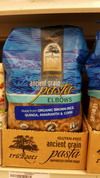
The Paleo diet revolution has come just in time. The idea is to return to a diet based on the foods our ancestors ate before they started growing grains. Humans have only been growing grains for the last 10,000 years – a tiny drop in the bucket of time compared to how long we have been around eating whatever we could find. Before grains we lived on greens and nuts and tubers and the occasional remains of a kill left by a predator. Despite the image of hunter-gatherers all killing buffalo and living high on the hog eating range animals, the reality was we were not very good hunters and most of the meat we ate was what we would scavenge from the kills of the good predators. More importantly, we could get to the parts the other animals could not get to because we used rocks and other things as tools to break open bones and skulls to eat the fatty parts. As our brains are mostly fat, eating the nutritional fat found inside of bones greatly contributed to our brains growing larger.
So what is out there that looks like noodles, but contains no grains?
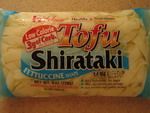
Many years ago the first no grain noodle I found was called Shirataki. It was made from a tuber called the Konjac root. This has traditionally been used in oriental cooking, much like Ramen. Normally the noodles were a clear or grey color and very rubbery and tasteless. Someone decided to make an acceptable form to Americans by adding a bit of soy four so it would look like regular pasta. It comes in liquid filled blister packs with the noodles floating inside. They are still tasteless, but they have almost no calories or carbs. A good strong sauce can make them quite acceptable.
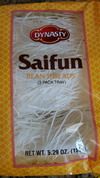
The second noodle type we found was one made from mung beans. It comes as a dry tangle of white threads that turns into thin white soup noodles once boiled. They are much thinner than vermicelli once cooked. Although nice with some organic butter or in a soup, they are still made of beans, not the best choice for a Paleo diet.

The next noodle replacement I found recently is a product called Sea Tangles. These are similar to the Konjac noodles in appearance, except that they are crispy and crunchy – like a vegetable. This is because they basically are a vegetable – a sea vegetable. They are great to add to salads to give it that pasta salad look, yet they are crunchy like the rest of the salad. When you cook them they stay crunchy, so I have not figured out a good use for them in a hot form.
Last week I had a study group of Psych K folks over to the house and I decided to make spaghetti, but using a new noodle replacement I had just found. It is a noodle made from sweet potato starch. This is apparently a Korean favorite. Once cooked the noodles are springy like Ramen noodles and are a clear to grey color. They 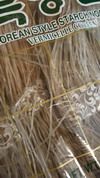 are not very appetizing to look at, but when you take a bite, they have the right noodle texture and a taste similar to noodles. Once I added my homemade sauce it turned them into a very respectable spaghetti replacement.
are not very appetizing to look at, but when you take a bite, they have the right noodle texture and a taste similar to noodles. Once I added my homemade sauce it turned them into a very respectable spaghetti replacement.
When you first open the bag of the sweet potato noodles it looks like you have opened a bag of heavy fishing line. The noodles are flexible, folded over lengths of tough clear substance. It is actually hard to cut this stuff with kitchen shears. But once you pop it into boiling water for about 15 to 20 minutes, you get soft bouncy noodles waiting for sauce or whatever.
Noodles like this are not for those on a carb-restricted diet as they are all carb. One cup of cooked noodles is about 200 calories. But if you are eating carbs, then this is a real alternative to grain based foods. It makes a nice break from all the vegetables and nuts, even with all the ways those can be prepared..
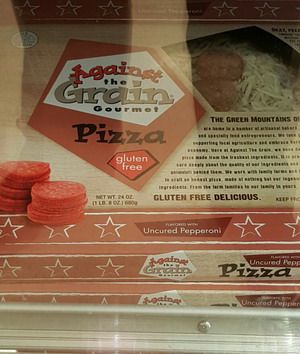
I also found a pizza and a baguette made by a company called “Against the Grain” made from tapioca starch and mozzarella cheese. The crust and bread are delicious, but did not agree with my digestion for some reason. These are found at Elliott’s Natural Foods and Whole Foods. The sweet potato noodles will hopefully be coming to Elliott’s soon.
So for those of us following a Paleo lifestyle, our styling just went up a notch. I have six bags of the sweet potato noodles at the office for $6.99 for those folks that would like to try them out.
